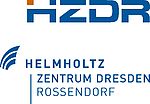AMREP Applied Mineralogy for Resource Efficiency of Platinum metals
Rationale:
Germany and South Africa have a symbiotic relationship with respect to mineral resources of the platinum-group elements (PGE) and other high-tech critical metals. South Africa produces over 70% of the world's platinum, which contributes significantly to South Africa's economy. Germany has no primary platinum resources, but it is among the world's largest consumers of platinum-group elements for high-tech applications of major importance to the German economy (catalytic converters, hydrogen fuel cells, medicine, computers). Both nations therefore share interests in a long-term, sustainable, socially and environmentally-responsible management of PGE resources in South Africa.
Goals:
The AMREP project will apply modern mineralogical and metallurgical know-how and instrumentation, combined with geostatistical modeling, to increase the efficiency of metals recovery in our case study: Thaba Chromium Mine owned by Cronimet Chrome Mining SA (Pty) Ltd. The Thaba Mine currently produces chromite concentrates from the western limb of the Bushveld Complex (Fig. 1) but there is good potential for recovery of byproduct platinum metals.
The research of AMREP will:
- Determine PGE concentrations in representative ores from the MG and LG series at the Thaba mine, including pristine, transitional and oxidized ore types
- Identify the minerals hosting PGE and quantify their textural properties in 3D
- Conduct laboratory experiments to simulate low-temperature oxidation and weathering of primary ores, and quantify the mineralogical and chemical changes
- Optimize beneficiation procedures for PGE recovery from the different ore types
- Establish a geometallurgical model for chromitite-hosted PGE in the Thaba mine
The ultimate goal of AMREP is to provide the mineralogical and geometallurgical data and interpretive model for recovery of platinum metals in the chromite ores from Thaba mine.
The 7 partners in the AMREP team have defined an innovative, two-prong research approach that involves:
- combining macro-scale geological and mineralogical data from the orebodies with cutting-edge techniques for 2D and 3D micro-analysis of primary and oxidized ores to quantify in detail the contents and mineralogical deportment of platinum-group elements (PGE) within them; and
- integrating this knowledge with information from beneficiation tests of the different ore types into a geometallurgical model. Geometallurgical models boost resource efficiency by considering all of the geologic, chemical and process-engineering aspects of the specific orebodies being mined.
Benefits:
Expected benefits of this project include:
- Increasing the efficiency of primary resource utilization by allowing recovery of PGE as a by-product from chromite ores
- Extending the lifetime of the primary resources
- Advancing the holistic approach to mineral resources by geometallurgical models
- Providing training and capacity-building for South African partners
- Supporting the growth of mineral resource R & D activities and expertise in Germany, via cooperation between industry and research institutions.










